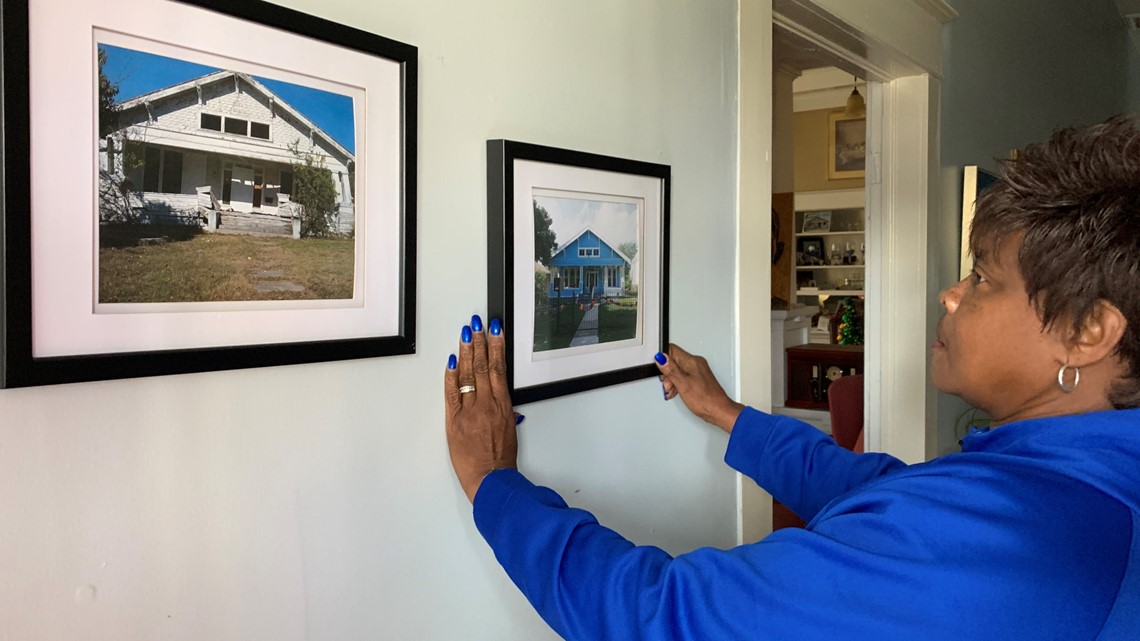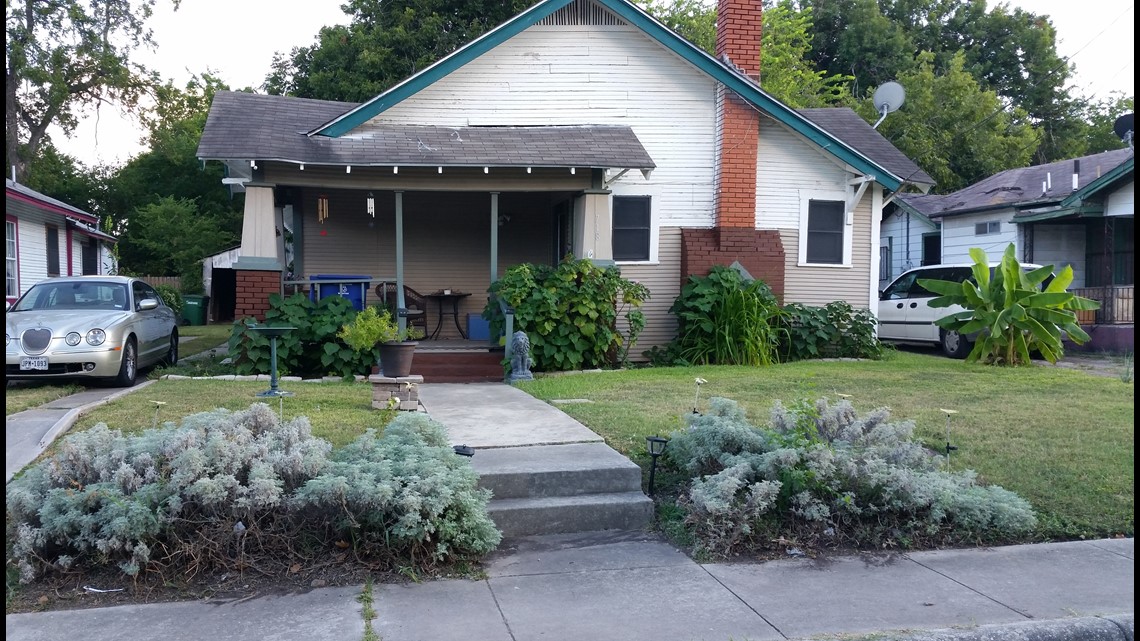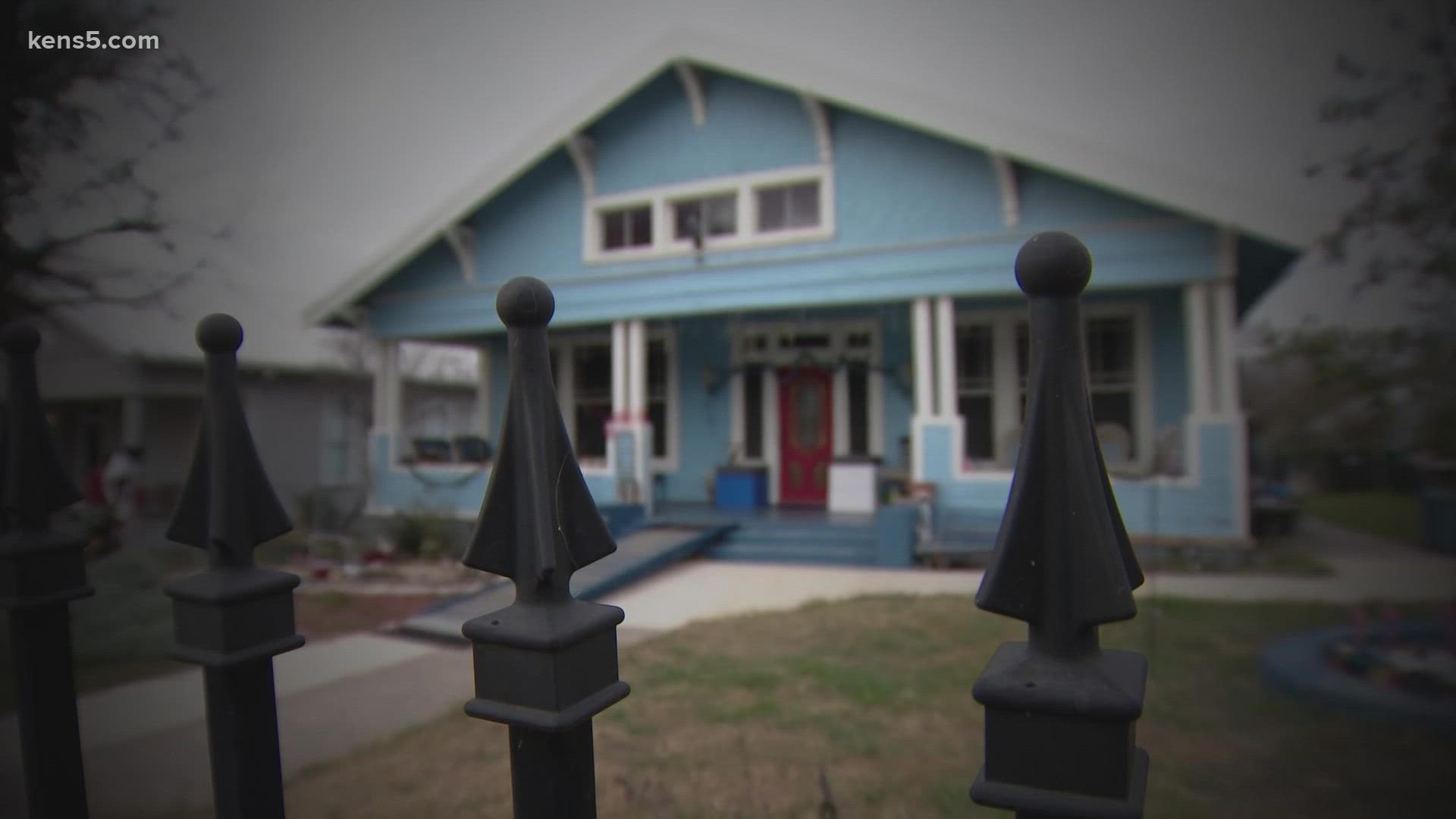SAN ANTONIO — One San Antonio neighborhood has undergone a makeover, but there’s fear this change could do more harm than good.
Property values in these historic neighborhoods have sky-rocketed, but it drives out some of the city’s poorest families.
In a special report--Eyewitness News shares who this is impacting and what’s being done to make the change positive for San Antonians.
Just outside of downtown San Antonio, one neighborhood is seeing a revival.
“Living over here on the east side…We have more resources than any other area, I think,” Dee Smith said.
Between close proximity to downtown areas, the AT&T Center, the Hays Street Bridge and the Alamodome, it’s no secret why the east side has become a more attractive place to live.
Along Hays Street is where Smith, an executive member of the Dignowity Hill Neighborhood Association, has lived for 15 years.
Smith bought her historic home back in 2007. She purchased it unseen, in an auction for $3,200.


“The house was off its foundation, it was abandoned for at least 20 years. It was like a ghost house,” Smith said, adding she recalls having to tell squatters to leave when she first saw the home in person.
In 2013 she finished her renovations. Initially, Smith wanted to rent the home, but decided to stick around.
“I started liking everybody, it reminded me of how I grew up,” she said.
The growth is picking up steam in many east-side neighborhoods. Not far from Martin Luther King Jr. Middle School, you can see new construction nestled in between older homes, establishing higher property values for the entire block.
Leonard Pellman retired and moved to Jefferson Heights in 2013.
The homes around him have changed, but not his.
“I’ve done nothing to it other than put a little paint to it and repaired some things that were old,” Pellman said.


The home he bought for $38,000 is now valued at $170,000. The property taxes on the house went up from $140 to $600.
He feels the current hot housing market is failing those who are on fixed incomes, as well as families who have lived here for generations.
“I’m hoping to stay there for a while, but I’m living on social security and a few book royalties," Pellman said. "I can’t afford to have the taxes to keep going up and up to stay in the home."
Pellman and others are not completely resistant to the changes in these historically Black and Latino neighborhoods.
“When we talk about gentrification, we look at the worst part of it. But there’s pros and cons. The good part is you have a blighted area that’s not completely turned over, but we’re almost there,” Smith said.
Turning anxieties into new opportunities
With gentrification and development comes change, but new businesses on the block want the change to be positive.
“We just wanted to bring life back to the east side,” Belize Gradney said.
Tony G’s Soul Food is one of several local Black-owned businesses, which recently moved into its new space on South Hackberry and East Cesar E. Chavez Boulevard.
The restaurant serves classic dishes made by community residents. Gradney is the general manager of the store and says the business also has a second-chance program offering jobs to parolees.
“A lot of locals are on our wait staff and in our kitchen, we wanted to help out in the community as well,” Gradney said.
The restaurant also hosts meetings with community stakeholders and groups.
Groups like the San Antonio Housing Authority are building developments throughout the area in order to address the affordable housing gap.
Smith tries to help residents who are dealing with exorbitant property taxes.
“We try to bring in people, different speakers from the city to enlighten them on the assistance that’s out there,” Smith said.
She doesn’t want her neighbors to be driven out of their homes, but acknowledges her neighborhood has eyes on it.
“I’m a city girl, but I don’t want to have people stacked on top of me,” she added.
Neighborhoods that were once dead-ends near downtown are now becoming a destination.
But Smith feels old and new neighbors should have an equal chance to live here.
The Bexar County Tax Assessor-Collector has several resources for residents to save on their property taxes. The county says it offers the most property tax payment plans of any of the 254 counties in Texas.
Homeowners are also eligible for property tax exemptions. You can check to see which exemptions may apply to you on the Bexar County Appraisal District’s website.
The councilman representing the east side says more affordable housing is on its way.
"We have approved new developments that focus on building apartments at deeply affordable rates," Jalen McKee-Rodriguez told KENS 5 in a statement.
"Our focus is on building housing for residents at 30%-50% of the Annual Median Income (AMI) because we determined that this is where the need exists. For instance, a family of 3 making $38,880 per year would be able to afford these units.
"As a city, we have made it our goal to produce 28,000 homes over the next 10 years."
We know that keeping people in their homes is the most affordable housing stock we have. This year, we approved $16.1 Million in home repair programs and sent the voters an additional $45 Million for home repair program in the 2022 bond. This is the most money our city has ever dedicated to home repair and affordable housing for our residents."
McKee-Rodriguez told KENS 5 the city has worked to set parameters for developers, so the expectation is that city dollars will produce more deeply affordable units at the 0 to 50% annual median income.
"The city was previously over-producing market-rate apartments," he said. "But we are now committed to approving development projects at more deeply affordable levels.

